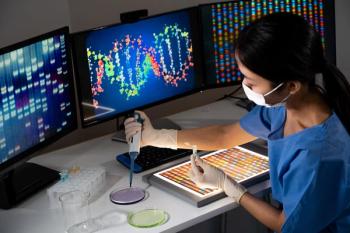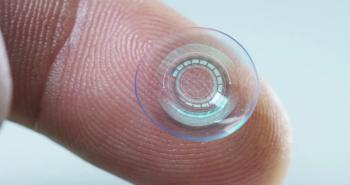
Having an on-site lab can turn profits
A profit calculator can help determine whether an on-site lab would be prosperous for you.
At the time, he said, wholesale labs were edging a wide variety of lenses and surfacing them with high-quality coatings that really weren't available elsewhere in the marketplace. Likewise, working with coated lenses was difficult for his technicians because they were slippery and would frequently move when placed in edging machines. However, labs charged a high fee. Dr. Singleton's practice paid anywhere between $30 and $50 for each pair of lenses that were water resistant, anti-reflective, and anti-static.
Still, the deal was worth checking out. It had been a long time since he analyzed his lab costs. Much had changed in lens technology. While crunching some numbers, he inadvertently created a financial tool-which he later named a profit calculator-to help him determine which course of action to follow. The calculator worked so well that it's now available to other optometrists who are on the fence about maintaining their on-site lab or outsourcing the work.
"I came to the conclusion that it didn't make sense to take the company up on its offer because I was locking myself into certain costs," he said, adding that his lab produces up to 20 pairs of glasses each day. "I know it sounds crazy, but I figured out that by making a simple change-switching over to a new lens-I could add about $200,000 a year to my bottom line. It was mind-blowing."
The enabler
The new lens (UltraClear&Lite, Optimus) is part of a line of finished lenses with premium anti-reflective (AR) and oleophobic properties. The lenses have a sticky coating that helps them stay in place during edging, but can be easily rinsed off with water. Just as important, he said, is that they resist dirt or smudge marks and stay clean. Dr. Singleton pointed to a recent trade show demonstration where the lenses were dry and clean moments after being dipped in cooking oil.
Up until now, Dr. Singleton said, there was a window of time-during the past 6 years-where it was more cost-efficient for optometrists to work with labs than edge lenses in-house. Besides, optometrists no longer had to worry about hiring trained technicians, stocking lenses, or maintaining expensive lab equipment.
"But what happened while everyone was asleep and comfortable with that mode of operation was that all of these new lens treatments came in and suddenly we were paying more for treatment on the lenses than we were for the lenses themselves," he said, adding that finding this new line of lenses made his numbers work. "It got into a crazy, upside-down mode."
Qualifying questions
Dr. Singleton's profit calculator asks seven questions:
Other numbers are also added to the equation, such as the daily number of edging jobs and labor costs for technicians. After this data is entered, the profit calculator auto-tabulates the projected profits a practice could realize for 1 year.
"Dr. Singleton's calculator is so precise that Optimus is sharing it with ECPs on its Web site," said Christie Scott, chief operating officer of Optimus.
Not only is Dr. Singleton's practice saving money, but patients also receive their glasses much faster than when using a wholesale lab.
Still, not all patients can afford the high-end lenses. So he gives them away for the same price as standard lenses. Dr. Singleton explained that it's less expensive to gift them than order regular AR coatings from an outside lab, which can cost between $80 and $120. All Dr. Singleton asks in return are word-of-mouth referrals. So far, he said, the marketing tactic has worked and increased his practice's foot traffic.
"Although I can't point to a big pile anywhere, I believe I've realized that $200,000 in profits," Dr. Singleton said. "I've been very thankful that we've had these lenses during these down economic times because it's really part of what's kept us above water."
Newsletter
Want more insights like this? Subscribe to Optometry Times and get clinical pearls and practice tips delivered straight to your inbox.















































